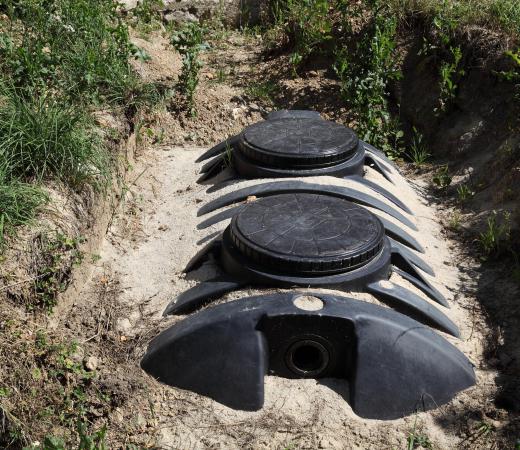An injection well is a machine which transports, or injects, liquid waste into the ground. Different countries have different regulations for injection wells. Less developed countries, such as Mexico, have fewer regulations compared to countries like the United States (US), the United Kingdom (UK), and Norway. There are five types of injections wells, labeled Classes I-V.
Injection wells are relatively inexpensive because they require little or no pretreatment of the waste before disposal. An injection well is made up of pipes that force waste underground and are lined with cement and sealed on the surface to help prevent leakage. Inside the cement casing is the actual injection tube. This tube can be sealed at the bottom to prevent backup of injected waste material. Despite these precautions, it is still possible for waste to leak into drinking water and the long term effects of injection well waste disposal are not known.

Class I injection wells are used for both hazardous and nonhazardous materials, such as fuels, pesticides, and explosives. In the US, their use is regulated by the Resource, Conservation and Recovery Act(RCRA). Injections can only occur at depths greater than 4,000 feet (1,219 m) and the rock formations that are used as injection sites have to be isolated so there is little chance that waste material would seep into drinking water. They cannot be placed in areas that have a history of seismic activity.
Class II injection wells are used for the disposal of wastes associated with oil and gas mining and manufacturing. Generally hydrocarbons are injected into the ground. In the US, class II injection wells have been used since the 1930s.

Used for gathering rather than disposing, Class III injection wells are employed in mining. These wells inject, and then retrieve, water or superheated steam in the ground in order to extract minerals. There are two types of extraction. Solution mining usually extracts salt or sulfur by dissolving or melting the substance in the injected water. In situ leaching extracts primarily uranium by injecting a non-toxic substance into the rock that breaks up and dissolves the minerals.
Class IV injection wells are used for strictly hazardous and radioactive material. Scientists found that this type of injection well had a high risk of contaminating drinking water. They were subsequently banned in the US, Norway, and several other countries.
The most common type of injection wells are Class V. Class Vs drain by gravity into aquifers. Typical examples of class V injection wells are septic tanks and drainage wells. This type of injection well is basically safe. However, improper maintenance can cause backups that flood lawns and other areas with sewage.
